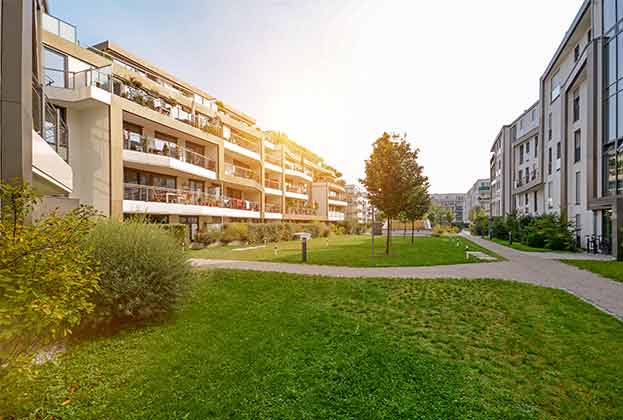Providing a balanced mix of tenures and finance models will make housing delivery more able to withstand market fluctuations in the long term
Delivering a range of tenures from build to rent to extra care can not only enhance build-out rates as concluded by the Letwin Review, it can also enable delivery to continue in more challenging markets. This reduces risk for the developer and helps build a sense of community sooner with local amenities, such as shops and cafes, able to open earlier as affordable and rented homes can often be occupied faster. However, land values and/or margins may need to be lower to accommodate a mix weighted away from private sale.
Affordable housing
Grant-funded affordable housing can provide counter-cyclical resilience in delivery and there is ‘virtually unlimited’ demand, according to the Letwin Review. Funding through the Affordable Homes Programme, the Strategic Partnerships Programme, and the rise in private funding of affordable homes supports delivery of these homes beyond planning obligations. First Homes will also widen the market for new build to those with lower incomes. However, the land value generated from building affordable homes can be much lower than for private sale.
Build to rent
Build to rent is a growing sector that can be delivered in both suburban locations and city centres. Demand is greatest where there is strong local employment, albeit the balance between capital values and rents can be a challenge for viability. Some 53% of private rented households currently live in suburban locations, which appeal to more established families – the fastest growing group of renters. Of those in the private rented sector, 30% are now 35–44 years old, almost double the proportion a decade ago.
Our analysis shows that a large site with 20% of the homes for private rent could be delivered 25% faster than a site with no build to rent stock
Savills Research
By incorporating more build to rent homes, delivery rates can be increased and build-out times can be reduced. Our analysis shows that a large site with 20% of the homes for private rent could be delivered 25% faster than a site with no build to rent stock (see Savills Suburban Build to Rent).
Financial diversity
Using build licences instead of upfront land payments, and delivering income-generating uses such as leasing or selling land for industrial space, care homes or workspaces alongside homes can help cash flows for developments. Forward-funding of build to rent or affordable housing can too.
Build to rent is often delivered via forward-funding agreements with investors, and if the forward fund agreement is secured early, the housebuilder can use the land payment to help fund some or all of the preliminary work on site. Builders can also benefit from cost savings by working their supply chains harder, thereby making savings on materials through larger and more visible long-term orders. A similar structure is also possible with affordable housing, by working with local housing associations.
Read the articles within Spotlight: Delivering new homes resiliently below.
.jpg)



